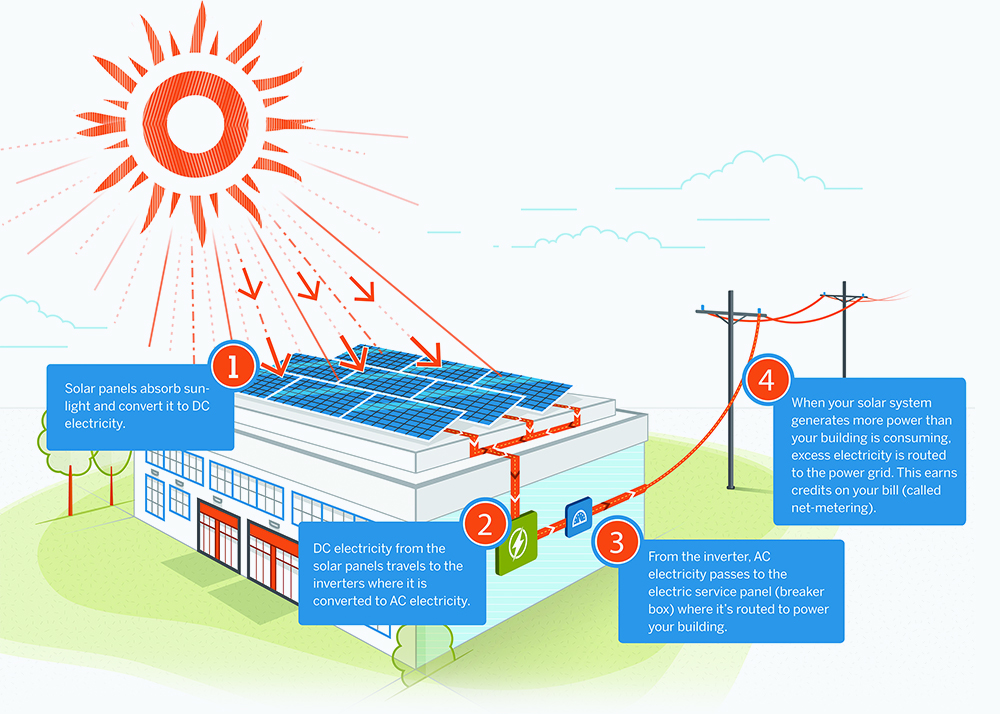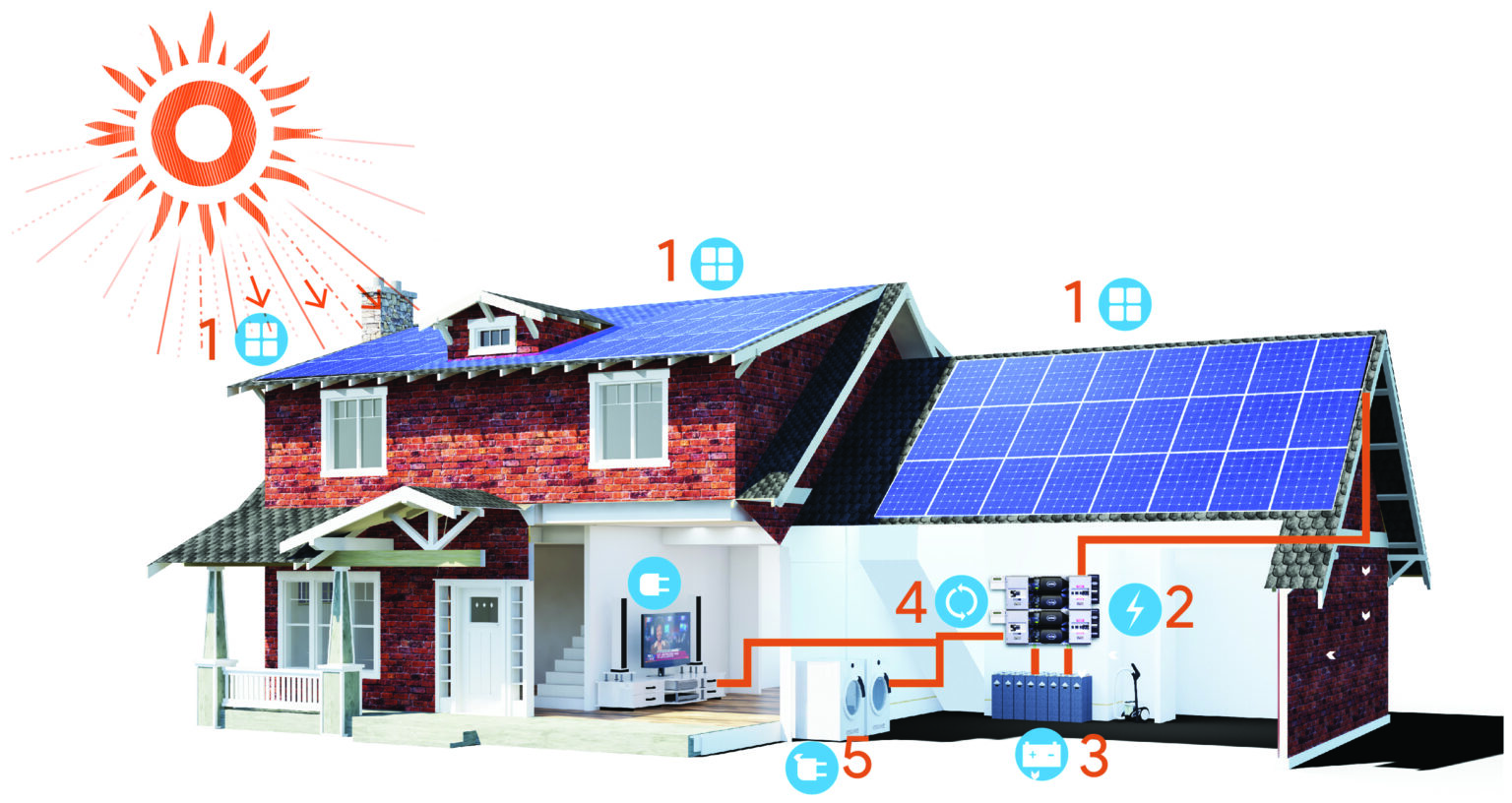At Maglare Technologies Pvt. Ltd., we don’t just deliver energy – we deliver a promise of sustainability, reliability, and future-readiness. With a legacy of innovation and a decade long commitment to clean energy.
Why Solar
How Solar Works?
On Grid Solar System
On grid/ grid-connected photovoltaic power system is an electricity generating solar PV power system that is connected to the utility grid. A on grid system is consists of Solar PV Modules, one or several inverters, a power conditioning unit and grid connection equipment. They range from small residential and commercial rooftop systems to large utility-scale solar power stations.
Working Principle

Net Metering
In areas where net-metering policy is in place, the energy generated by a grid connected solar plant is recorded by the bidirectional energy meter which is installed on site and on grid system feeding excess power that it makes back to the grid and your electricity meter going backward. The net import and export of electricity will be adjusted per billing cycle.

Off Grid Solar System
An off-grid system is not connected to the electricity grid and therefore requires battery storage. Off-grid system has enough power generation and battery storage to meet the home or larger site requirements even in the of winter when there is little sunlight. The off-grid systems are usually only found in areas which are far from any electricity grid.





